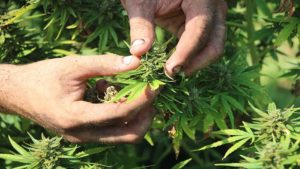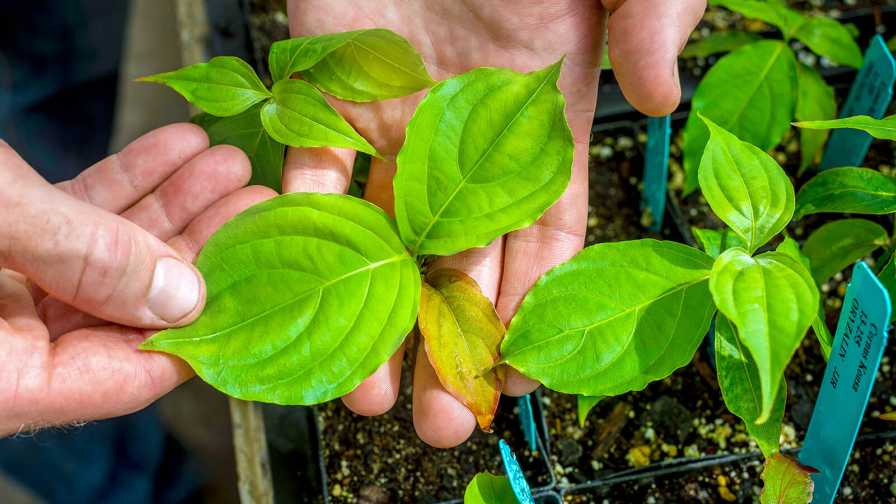Hempers Rejoice! DEA Lab Requirement Nixed, FDA Pledges CBD Regulations

A head grower near Spiro, OK, inspects outdoor hemp flower.
As first reported by Hemp Industry Daily’s Laura Drotleff, USDA and the DEA have come to a mutual agreement to drop the Interim Final Rule (IFR) requirement that all hemp potency testing for the 2020 season must be undertaken at a DEA certified testing lab.
The requirement was nixed after a wave of comments during the IFR comment period asked the government to reconsider the mandate. All in all, USDA received a reported 4,800 comments on the IFR over a two-month period.
I reached out to Trilogene Seeds CEO Matt Haddad, a well-known player in the U.S. hemp market, for his thoughts on what the development means for hemp growers in 2020.
“The removal of the DEA testing lab (requirement) makes it more accessible for farmer’s to work with local potency labs,” he explains. “The reason why they removed that aspect is because there just are not enough DEA registered potency labs out there, and it would create a big bottleneck for the industry.”
Although the general sentiment among Hempers is this is good news for the industry at-large, Haddad cautions that there still could be issues that arise from the IFR potency testing protocol. As we witnessed with the curious case of Certified Ag Labs in Nevada, some additional oversight over potency testing labs might not always be a bad thing for producers.
“The quality of their processes and equipment is unverified, which puts people at risk,” Haddad adds.
Still, the ruling clears up a lot of the confusion around how the testing process would work once in place. Some thought in the immediate aftermath of the IFR release it would mean having DEA agents on-farm taking samples from blocks of hemp. Not the case, as it looks like the testing process will track similarly to how legal cannabis producers submit their samples for testing.
“Shipping samples is the most commonly used practice (in hemp and cannabis) because High Pressure Liquid Chromatography (HPLC) testing is the standard most departments of agriculture are using,” Haddad says. “These units are not mobile (currently) and I have yet to find an extremely accurate mobile testing device that is suitable.”
But, generally speaking, this is good news for an industry that was hoping USDA would take its advisement under consideration. It looks like that did in fact occur, and the agency went back to the drawing board to come up with something more palatable for both sides.
“This is one step in the right direction (to a degree) because it is making it a little easier to farm hemp and pass compliance for 2020,” Haddad mentions. “But, truth be told, DEA registered facilities will be necessary to remove all the bad apples and to keep everyone’s product above board.”
Good News for CBD, Too!
Drotleff also broke the news that the FDA has indicated it will draw up regulations to oversee the swiftly burgeoning domestic CBD-infused product market in 2020.
With that additional certainty in place, here’s hoping 2020 proves a more prosperous, less dramatic growing season for hemp growers in the U.S. than what occurred over the last 12 months, when domestic demand for the biomass as well as processed CBD oil dropped precipitously, leaving some farmers quite literally holding the bag.
According to Drotleff, no official timeline for final CBD regulations has been released by the agency.










